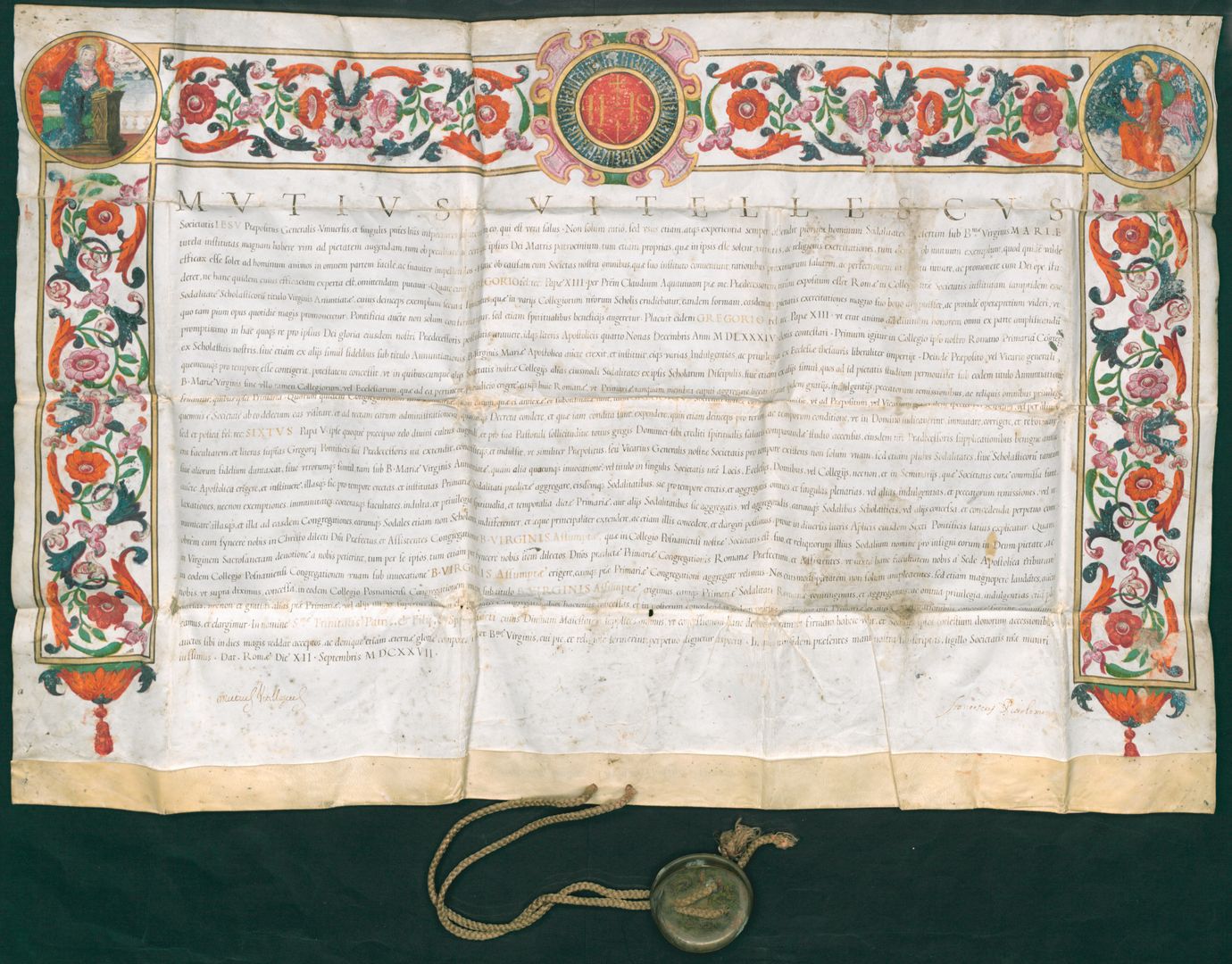Jesuit College in Poznań
6

Overview
The Jesuit College in Poznań was an important Jesuit university, operating from 1572 to 1773, and is considered the forerunner of Adam Mickiewicz University. Located at Kolegiacki Square, it now serves as the seat of the Poznań City Hall. The building, constructed between 1701 and 1733 under the direction of Jan Catenazzi, is a three-story horseshoe-shaped structure surrounding a courtyard, with a Baroque gate tower. The pink facade, adorned with white pilasters and cornices, conceals a rich history, as the arcades surrounding the courtyard were walled up in the 19th century. The most valuable element of the building is a bronze pillar, which is the heart of the bell from the Gothic Collegiate Church of St. Mary Magdalene, once located on this site. The College cultivated a modern approach to education, offering courses in classical languages, exact sciences, and natural sciences, as well as maintaining experimental laboratories and an astronomical observatory. Rectors such as Jakub Wujek contributed to the development of education in the region, and among the students of the College were future influential bishops and archbishops. The College sought to obtain university status, but this was met with resistance from the Kraków Academy. After the dissolution of the Jesuits in 1773, the school was taken over by the Commission of National Education, and in 1780 it was merged with the Lubrański Academy. In the 19th century, the building served as the seat of the partitioning authorities, and after World War II it became the seat of the City Hall. Interestingly, in 1806, the College served as the temporary quarters of Napoleon Bonaparte, and within its walls hosted such famous figures as Frédéric Chopin and the Duke of Wellington. The building's bell tower, with its Baroque spire and bells named Bogurodzica, St. Joseph, and St. Anthony, adds architectural and historical charm. Today, it continues its educational traditions as St. Mary Magdalene High School and also contributes to the academic legacy of Adam Mickiewicz University, carrying forward the heritage of its predecessor institutions.
Location
Tickets
Powered by GetYourGuide
2025 Wizytor | All Rights Reserved